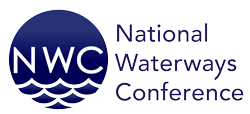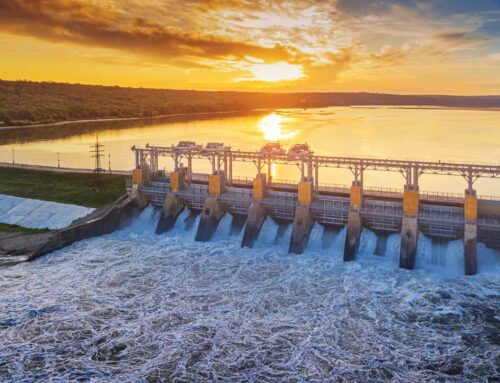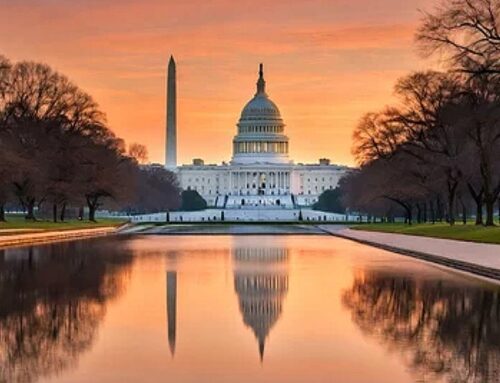NWC Federal Spotlight
January 25, 2022, Edition
Happy Tuesday everyone!
Below are a few updates about what is going on in DC and within NWC.
The Senate and House will be back for legislative business next week. As an FYI, the House has cut back on their face-to-face meetings after over 25 Congressional members tested positive for COVID-19 in the last several weeks. As a result, House leaders have reinstituted social distancing requirements and lengthened voting times for floor votes. Furthermore, House Democrats have decided to delay their annual retreat—originally scheduled for February 9-11—and instead, will hold a virtual “messaging summit” on Feb. 10.
Please be aware that if you are planning to come to DC in the next several months that DC has instituted new COVID-19 requirements. As of Jan. 15, DC will require proof of vaccination w/photo ID at “covered establishments,” which includes hotel common areas, meeting spaces and restaurants. Proof of vaccine means one vaccination by Jan. 15 and fully vaccinated with two vaccine shots by Feb. 15, 2022. Additionally, due to COVID-19, the U.S. Capitol Building and Congressional Office Buildings remained closed to the public (unless you have a meeting set up with an office who is taking face-to-face meetings). Moreover, while many federal agencies had planned to start bringing federal employees back to the office on Jan. 3, these plans have been delayed and each agency has a different set of rules. Mid-January, the U.S. Environmental Protection Agency (EPA) notified their employees that political appointees will return at the earliest on Feb. 28, 2022, and EPA supervisors, managers and non-bargaining unit employees will return on March 28, 2022. U.S. Department of Agriculture (USACE) is in the same boat since most of their workforce is teleworking. Under USDA policy, employees will be given 45-day notice before a return to the physical workspace. To date, no date has been provided. The U.S. Army Corps of Engineers (USACE) continues to work on a remodel of their space and estimates they will return to the mid- to late spring. However, USACE also notes that many positions, traditionally located in Washington DC, are now sited around the U.S.
As always, if you have any questions, please do not hesitate to reach out.
NWC
CAPITOL HILL HAPPENINGS
BUILD BACK BETTER. Democratic leaders have acknowledged they face an uphill battle to pass the administration’s $2 trillion Build Back Better package “as is” after Sen. Joe Manchin (D-WV) expressed opposition before the holidays. Instead, the Senate and House are considering scaling back and breaking the bill into smaller chunks to pass specific provisions in the months ahead. At House Speaker Pelosi’s weekly press even last week she indicated that it still would be a “significant” bill, but “more limited.”
FY2022 APPROPRIATIONS. Congress is less than a month away from their self-imposed deadline of February 18 to finish their FY2022 appropriations package. However, Congressional appropriators indicate that they are getting close to an agreement to fund the government and prevent a shutdown. If an agreement is not in place by then, it is likely that Congress will pass another continuing resolution, potentially through the end of the year. The FY2021 cycle ended last September. Since then, the federal agencies have been working off a continuing resolution which essentially extends their fiscal year but at FY2021 funding levels. Concurrently, Congress will need to start working on FY2023 appropriations soon. How FY2022 and FY2023 appropriations dovetail may depend on what happens by Feb. 18.
2022 WATER RESOURCES DEVELOPMENT ACT. Both the House Transportation and Infrastructure (T&I) and the Senate’s Environment and Public Works (EPW) Committees held WRDA-related hearings earlier this month. The hearings featured Mr. Michael Connor, Assistant Secretary of the Army for Civil Works of the Department of the Army and Lieutenant General Scott A. Spellmon, the Chief of Engineers and Commanding General of the U.S. Army Corps of Engineers. Connor stressed in his testimony the administration’s commitment to help disadvantaged communities, improve infrastructure, increase USACE effectiveness, and incorporate natural and nature-based infrastructure into water projects. Spellmon echoed Connor’s comments and empathized the USACE’s commitment to reduce risk to disadvantaged communities, while rebuilding infrastructure to be resilient to climate change.
During the Q&A sessions, Spellmon acknowledged that there continue to be permitting hurdles and committed the agency to ongoing work, especially as the 2021 Infrastructure Investment and Jobs Act (IIJA) project funding moves forward. Furthermore, in addition to the 14 signed chief’s reports referenced in Spellmon’s testimony, he indicated that another 14 may yet be signed, bringing the total chief’s reports to 28 in WRDA 2022. After asked about USACE priorities, Connor indicated, in the short term, the FY 2022 Sect. 7001 report is a priority, as well as assessing how to further administration priorities on resilience, environmental justice, economically disadvantaged communities and supply chain issues. Another member asked about the status of the water supply report required under a previous WRDA bill. Connor stated that the report is due in June of this year and should be released at that time. Spellmon fielded a question on supply chain challenges for water resource projects to which he replied, while other parts of USACE are seeing supply change challenges, but we have not seen these challenges in the civil works realm. Connor got a question on agency’s effort to rewrite the “Waters of the U.S.” (WOTUS) definition in the Clean Water Act, specifically, will the agency grant an extension to the current public comment period (ends Feb. 7). Connor answered that they are discussing the possibility of extending the WOTUS public comment period, but no decision has been made yet on an extension.
The Senate is currently drafting their WRDA bill based on Senator submissions from last December, with potential committee action by April and floor action by the May/June timeframe. The House is just starting to collect legislative requests from members and will likely take up their bill this summer with a potential House-Senate compromise bill by the fall. In December, NWC submitted several legislative asks which were formulated by NWC’s Legislative Policy Committee.
JUDICIAL CORNER
SUPREME COURT. SUPREME COURT AGREES TO HEAR SACKETT CASE—IMPACT TO WOTUS RULEMAKING? On January 24, the U.S. Supreme Court announced that it would revisit Sackett v. EPA, a decade after it first reviewed the case. Specifically, the court will assess the limits of federal authority over wetlands and other waterways, including what tests should be used to determine a “Waters of the U.S.” under the Clean Water Act (CWA).
The Sackett’s case began in 2007 after the U.S. Environmental Protection Agency stopped construction of a house the Sacketts were building because the plot of land contained a wetland. The agency ordered them to get a Section 404 permit for the construction or face a $30,000 a day fine. When the Sacketts tried to challenge EPA’s compliance order, they were told they couldn’t. In 2012, their case reached the Supreme Court who ruled that the Sacketts could in fact challenge EPA’s order. Since then, EPA has dropped the order but is adamant that the Sacketts should be required to get a Section 404 permit for the construction. Last year, the 9th Circuit Court of Appeals ruled against the Sacketts stating that the land in question was a jurisdictional wetland under Justice Kennedy’s 2006 “significant nexus” test in Rapanos v. United States. The Sackett’s lawyer appealed the 9th Circuit Court decision to the Supreme Court, who is expected to take up the case this fall, with a possible decision by 2023.
In Rapanos v. United States, the U.S. Army Corps of Engineers was challenged over its intent to regulate isolated wetlands under the CWA Section 404 permit program due to their proximity to manmade ditches. In a 4-1-4 split decision, four justices supported a lower courts decision, and five voted to overturn the decision, sending the case back to the lower court with new, conflicting instructions on how jurisdiction should be determined. Under Justice Scalia’s Rapanos opinion, CWA jurisdiction should only apply to “relatively permanent, standing or continuously flowing” water. Justice Kennedy’s Rapanos opinion stressed, “Absent more specific regulations, however, the Corps must establish a significant nexus on a case-by-case basis (emphasis added) when it seeks to regulate wetlands based on adjacency to non-navigable tributaries.”
Waters of the U.S., aka WOTUS, is a term that has been around since the 1899 Rivers and Harbors Act. In 1972, WOTUS was added to the CWA to differentiate between waters that fall under state vs. federal jurisdictional authority. Since its inception, the term WOTUS has morphed. In the past several decades after several confusing Supreme Court decisions, the Obama, Trump and now Biden administrations have attempted to rewrite the WOTUS definitions to comply with either the Kennedy or Scalia opinion in Rapanos. Currently, the Biden Administration is accepting comments on a proposed rule until February 7, 2022, that would reestablish the 1986 regulations, while incorporating portions of both Kennedy’s and Scalia’s opinions into the revised definition. At this point, we are unsure how the Sackett case will impact the current WOTUS rulemaking efforts. Numerous groups, including members of Congress, have requested a 90-day extension of comments, as well as a request that the EPA and the Corps pause their rulemaking until after Sackett is decided in the Supreme Court.
FEDERAL AGENCY CORNER
ADMINISTRATION. FACT SHEET: BIDEN-HARRIS ADMINISTRATION ANNOUNCES HISTORIC INVESTMENT TO AMERICA’S PORT AND WATERWAY INFRASTRUCTURE. On January 19, the White House released a fact sheet that detailed the $14 billion investment the administration was making to strengthen ports and waterways supply changes and increase climate resilience. According to the fact sheet, in FY2022 alone, in “over 500 projects across 52 states and territories.” The funding comes from the Infrastructure Investment and Jobs Act as well as the Disaster Relief Supplemental Appropriations Act (P.L. 117-43).
EPA/USACE. REMINDER TO SUBMIT COMMENTS ON PROPOSED RULE TO RE-ESTABLISH PRE-2015 WOTUS RULE (Comments due February 7, 2022). On November 18, the U.S. Environmental Protection Agency (EPA) and U.S. Army Corps of Engineers (Army Corps) announced a pre-proposal of a 290-page proposed rule to re-establish the pre-2015 definition of “Waters of the United States” (WOTUS). While the administration says this is part one of a two-step process to redefine WOTUS, the news that the Supreme Court plans to take up Sackett v. United States to determine the legal underpinning of WOTUS, now puts part two of this rulemaking in jeopardy.
USACE/NOAA. MEMO ON HOW USACE AND NOAA WILL EVALUATE EXISTING STRUCTURES IN SECTION 7 CONSULTATIONS—NWC LETTER. On January 5, 2022, the U.S. Army Corps of Engineers (USACE) and the National Oceanic and Atmospheric Administration (NOAA) issued a joint memorandum on how USACE and NOAA’s National Marine Fisheries Service (NMFS) will evaluate existing structures (docks, piers, flood control, dams, etc.) for environmental baselines in Section 7 Endangered Species Act (ESA) consultations. According to the memo, this agreement is applicable nationally, and may apply to a number of USACE permits and processes such as Section 404 dredge and fill permits, USACE projects, and Section 10 Rivers and Harbors work. In a January 6 call with stakeholders, USACE and NOAA highlighted their work in Puget Sound and stressed that they believe the memo builds upon 2018 NMFS West Coast Region Guidance on Section 7 consultations for existing structures. However, according to PNWA, a NWC member, the guidance has significantly slowed maintenance projects down while increasing costs for ports and other entities. On January 14, NWC sent a joint letter to USACE/NOAA expressing concerns with the memo and asked for further consultation with impacted nonfederal sponsors and stakeholders.
USACE. REQUEST FOR NOMINATIONS: STAKEHOLDER REPRESENTATIVES MEMBERS OF THE COMMITTEE ON LEVEE SAFETY (Nominations due March 22, 2022). On January 21, the Assistant Secretary of the Army for Civil Works (AWACW) posted a request for nominations for the Committee on Levee Safety (Committee). The Committee was formed to advise the U.S. Army Corps of Engineers and the Federal Emergency Management Agency on implementation of the National Levee Safety Program. The Committee has 14 members derived from eight state levee safety agencies; two representatives from the private sector; two representatives of regional or local governmental agencies and two tribal representatives. For more information and/or for information on how to apply, click here.
USACE. REMINDER TO SIGN UP FOR USACE/FEMA WORKSHOPS ON NATIONAL LEVEE SAFETY PROGRAM (Virtual workshops, ongoing, through February/ Comments due March 22, 2022). On December 28, 2021, the U.S. Army Corps of Engineers and the Federal Emergency Management Agency (FEMA) announced the Phase 1 launch of the National Levee Safety Program (NLSP). As part of this effort, USACE and FEMA committed to holding a series of workshops to hear from stakeholders through February. In Phase 1, USACE and FEMA will collect input on the purpose and scope of four priority areas within the program on National Levee Safety Guidelines; Integrated Levee Management; National Levee Database and Data Collection; and Implementation Support. As part of this process, the agencies will undertake stakeholder engagement to 1) understand the needs of the stakeholders this program is intended to support; 2). Provide opportunities for meaningful input to shape decisions and outcomes on program design, components, and products; and 3) ensure that the unique challenges related to levees faced by disadvantage communities and tribes are well understood and incorporated into solutions. For more information on the process and the workshops, click here. Last year, NWC submitted comments on NLSP. NWC, along with its Flood Control Caucus and Legislative Policy Committee, are assessing whether further comments are needed.
USACE. USACE RELEASES IIJA WORK SPEND PLAN. On January 19, the U.S. Army Corps of Engineers released USACE released its Infrastructure Investment and Jobs Act (IIJA) work spend plan. In November 2021, President Biden signed into law IIJA which provided $17 billion in funding to U.S. Army Corps of Engineers (USACE) civil works projects. Under IIJA, the Corps had 60 days to submit a FY2022 work plan to Congress. IIJA provided 17.1 billion in appropriations to primarily three civil works pots: 68% for construction; 23% for operations and maintenance (O&M) and 5% for Mississippi River and Tributaries (MR&T). Under IIJA, for each pot of funds, USACE was tasked to determine which projects would be funded. In IIJA, Construction received $11.615 billion, including $1.5 billion for harbors and navigation channels, $2.5 billion for inland waterways, $2.5 billion for coastal storm risk management, $2.5 billion for inland flood risk management, $1.9 billion for aquatic ecosystem restoration, $465 million for the Continuing Authorities Program and $200 million for environmental infrastructure. O&M received $4 billion under IIJA to be divvied up over three fiscal years–$2 billion for FY 2022, $1 billion each for FY23 and FY24. MR&T received $808 million, including $550 million for studies, construction, operations and maintenance and $258 million to address emergency situations. Other funding pots included $251 million for flood control and coastal emergencies, $160 million for the regulatory program, $150 million for investigations, $75 million for USACE’s WIFA program (dam maintenance, upgrades and safety) and $40 million for expenses.
Resources:
- To see the construction work plan, click here.
- To see the O&M work plan, click here.
- To see USACE’s flood control and coastal emergencies work plan, click here.
- To see USACE’s investigations work plan, click here.
- To see the MR&T work plan, click here.
UPCOMING NWC MEETINGS
NWC POLICY MEETING. NWC LEGISLATIVE POLICY COMMITTEE (Thursday, February 3 at 4pm ET). NWC’s Legislative Policy Committee (LPC) serves as the primary advisor on NWC federal policy positions and decisions. Comprised of a broad scope of NWC membership, LPC is a consensus-based committee that is tasked with studying issues, recommending new federal policy positions, and drafting and signing off on NWC letters. LPC meets face-to-face twice a year at NWC’s Legislative Summit and Annual Meeting and holds monthly video calls on the first Thursday of the month. LPC is open to all interested NWC members. If interested in serving on LPC, please reach out to Julie Ufner, NWC President.
NWC CAUCUS MEETING. NWC WATER SUPPLY CAUCUS MEETING (Friday, February 18 at 2pm ET).
As always, if you have any questions, please do not hesitate to reach out to me. Thank you again for your support of NWC!
Best,
Julie Ufner, NWC



